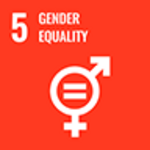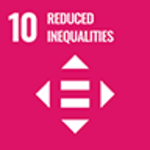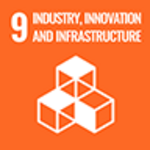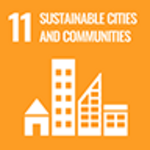
Ishihara: In Japanese society, where the theory of self-responsibility is dominant, pain and weakness tend to be avoided, but I'm sure everyone has pain and weakness, and it's important to pay attention to them. A new future may open up. I would like to think about this together with everyone.

Associate Professor Mai Ishihara (Photo: Takashi Maezawa)
Japanese society may be a society where many people are silent. Professor Mai Ishihara has delved into cultural anthropological research into the silence of not only ethnic and racial minorities such as the Ainu people, but also various people in various places such as Fukushima and Minamata. Recently, I have been focusing on the experiences of women, and in particular I am trying to depict the structure of Japanese society that can only be seen through the ``difficulties of life'' faced by minority women and women with various backgrounds.
Exploring the “difficulty of living” in Japanese society from people who live in silence
Please start by explaining the initial keyword "Silent Ainu" to get to know Dr. Ishihara.
Ishihara: The people I have focused my research on are people who are silent about their origins and attributes, or who do not have the words to express the circumstances and environment that surround them. In the early stages of my research, I expanded my research on ``silence'' based on my own experiences. The keyword here was "Silent Ainu." "Silent Ainu" refers to people who remain silent about their Ainu origins.
Currently, we are developing research that connects people who are dealing with various types of silence and considers what kind of ``difficulties in living'' are hidden in each silence.
In recent years, the word diversity has spread, and I think it has reached everyone's ears. The actual situation is still unclear, and I have the impression that those who use the term diversity are still fumbling around.
Based on this current situation, I would like to illuminate the structure of Japanese society that can be seen for the first time from the perspectives of minorities and various parties involved.
``Illuminating the structure of Japanese society'' is a very big theme.
Ishihara: Looking back at Japan's history, Japan had been isolated for a long time during the Edo period, but after opening up to the world, it rapidly became westernized, experienced both victory and defeat in two world wars, and even more suffered great damage from the atomic bombing.
Afterwards, under the occupation and protection of the United States, we achieved economic growth unprecedented in the world, and in the process, we sat down to think about what kind of country we were and what kind of society we were. It soon continued running and continues to this day.
Why are there so many people in Japanese society who are currently facing so many different kinds of ``difficulties in living''? What kind of structure makes this possible? This is a very big topic, but we are trying to think about it together with various parties.
One of the most well-known research methods in cultural anthropology is ``ethnography,'' in which a researcher stays closely in the field for a certain period of time to investigate and record the behavior and lives of people. In the case of Professor Ishihara, he uses a method called ``autoethnography,'' as described in his book ``Autobiographical Ethnography of Silence (Autoethnography): Silent Ainu Stories of Pain and Relief'' (hereinafter referred to as ``Silence''). Masu.
Ishihara: This is the first book in Japan to include the term "autoethnography" in its title.
Autoethnography is an ethnography based on the author's autobiographical elements. What makes my research different from more general ethnography is that it targets multiple fields in parallel. There is a wide range of attributes, stakeholder interests, and regions. In his book, he writes not only about ethnic and racial minorities, but also about a variety of people, including the majority, indigenous people overseas, and sexual minorities.
Although at first glance it seems like we are dealing with separate issues, there is a common thread within me, and horizontal connections that go beyond the framework of the issues are expanding among the people involved. By meeting other people who are dealing with silence, everyone, including me, changes, and the circle of change expands.
I feel that my research has inadvertently led to a proposal for a new kind of ethnography that is not limited to just a region, but instead examines issues based on concepts, time and space.

Instead of imposing responsibility on individuals, the responsibility is assumed by society as a whole.
The next research keyword is <pain>. When you are hurt by something, it becomes ``pain'' and ``weakness'' that sinks into your heart. These keywords can also become themes for research and education.
Ishihara: I think it's easy for everyone to understand that people who have a stake in the situation are suffering from pain. On the other hand, the question of whether people who do not have pain are doing the same is also a very modern issue.
In today's Japanese society, even if we encounter some kind of trouble, people tend to assume that it's their own fault, and I feel like there is a strong tendency to not show any weaknesses to society. However, humans have been able to connect and create culture because of pain and weakness, the technical term for which is ``vulnerability''.
In today's society, where this is forgotten, when we talk to students about this, some of them come to the realization that ``Now that I think about it, this thing was hard for me,'' or ``That thing was actually painful.'' .
In particular, there are many women who continue to struggle with the hardships of life without even realizing that they are being oppressed. I hope that my lectures will help each person realize their unique pain and think about what can bring about healing.
Some students may feel that they are not good at such topics.
Ishihara: It's true that the right timing is important when it comes to becoming aware of pain. That's why I want to create an environment in which teachers and students, adults and children alike, can accept each other's pain, rather than eliminating it too much or seeing it only as a bad thing. And I don't think it's important to think about the background of that pain and look for the culprit, such as ``who's at fault.'' The basic idea is that in order to make everyone happy in all walks of life, we want to improve societies where only one person feels the burden or where someone is treated unfairly.
Rather than placing responsibility on individuals, society as a whole should take on the responsibility and think about what the problem is from a system-wide perspective. By doing so, we believe that issues such as Japan's notoriously low gender balance, low birthrate, and unmarried rate can be improved, and we can also contribute to the development of Japanese society.
In fact, a female student who took the class said, ``After studying about gender, I realized that there are really problems with the marriage system.However, I want to get married and have children.'' there was.
It is actually very important to express this personal desire, ``I want to do this.'' When discussing and thinking about social issues, immediately banning them just because there is a problem with the system may actually make the situation worse. It may be important to consider what kinds of discrepancies exist between individual desires and social systems, and what methods can be used to improve them.
What should I share with the people around me so that I can live comfortably and in a good mood today, tomorrow, and a year from now? What kind of society should we create? Minorities and the majority, women and men, and various other parties can find clues to think about things that are familiar to them. I think this is the significance of researching and teaching this field at university.
When I returned to Japan from studying abroad in America, the first thing I noticed was that there were a lot of unhappy women there. And it's not just one or two people. Why are women so oppressed, given the fixed image of what they should be as wives, mothers, and adult women?
It may take some time, but I think the time has come to face this.

At Hokkaido University, where you can conduct interdisciplinary and international indigenous research
Hokkaido University has a wealth of facilities related to indigenous research, such as the Ainu and Indigenous Research Center and the Global Station for Research on Indigenous and Cultural Diversity (GSI).
Ishihara: At the Global Station for Research on Indigenous Peoples and Cultural Diversity, to which I belong, projects are always underway that involve researchers from other countries, and the interdisciplinary and international research environment is one of the best in Japan.
If you think about it, there is no field as interdisciplinary as indigenous studies, and it is an extremely rich field that connects all kinds of worlds, not only cultural anthropology, but also sociology, linguistics, engineering, and medicine. I would like everyone to experience the great advantage of studying indigenous research at Hokkaido University.
It's interesting that the color of the covers of Professor Ishihara's books so far has changed from black to white to multicolor in the order of publication.
Ishihara: One day, someone pointed it out to me and I realized it. For the first book, I asked the publisher for a solid black cover that looked like a crow (!) to express my desire not to have my colors painted over, and for the second book, ``150 Years of Hokkaido from the Ainu Perspective'', I provided illustrations. I've used it before, and it's a white base.
For the third book, ``Symbolized Indigenous Peoples/Women/Children,'' for which I was also the editor, I suggested to the designer that I want the book to be colorful enough to evoke the image of the Ainu, but also to shock people.
When I thought about how my interests changed from the first book to the third, I realized that the shift from black to white to colorful was reflected in the book's cover.
Finally, going back to diversity, I think the big problem in the current era of diversity boom is that we paint minorities, who have been suffering from various silences, into a single color called minorities.
At the same time, the social structure that allows the majority to ignore the ``difficulty of life'' of minorities and remain colorless and transparent is another issue that needs to be reconsidered.

From the left, the first book is ``Autoethnography of Silence: A Story of Silent Ainu Pain and Relief'', the second book is ``150 Years of Hokkaido from the Ainu's Perspective'', and the third book is ``Symbols''. Changes in interest are also reflected in the color of the cover, which reads “Indigenous Peoples/Women/Children”
Normally, everyone is a colorful person, regardless of whether they are a minority or a majority, regardless of their attributes or affiliations.
If each person is aware of their responsibility as colorful beings, the majority will be able to take into account situations where minorities are painted over as one color, and it will be possible to have dialogue about a variety of issues. I look forward to that.
I would be happy if we could move from a monochromatic and colorless society to a society where everyone is colorful.
If you hone your own original color without being overly afraid of sticking out, it will eventually become your own original color. This may be true in life as well as in learning and research.
I also want to cherish my own color, and I want to support you in the process of becoming a colorful person at Hokkaido University.

Mai Ishihara Associate Professor
Affiliation: Hokkaido University Ainu and Indigenous Research Center Global Station for Research on Indigenous and Cultural Diversity (GSI)
Cultural Anthropology, Autoethnographic Theory, Indigenous Studies, Indigenous Feminism Multiracial with Indigenous and settler leader origins. After graduating from university, he worked as an English teacher before entering graduate school. She conducts research that examines issues facing modern Japan from multiple angles, working with indigenous peoples, women, and various other parties in Japan.



































